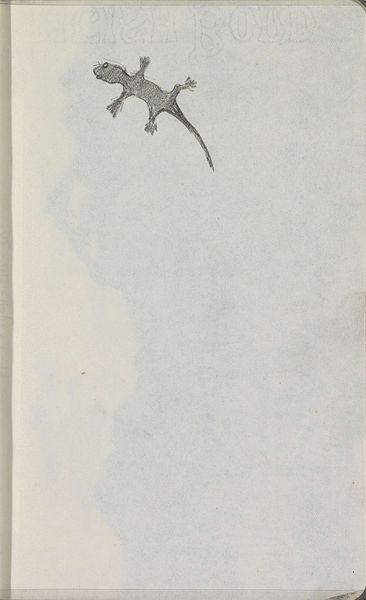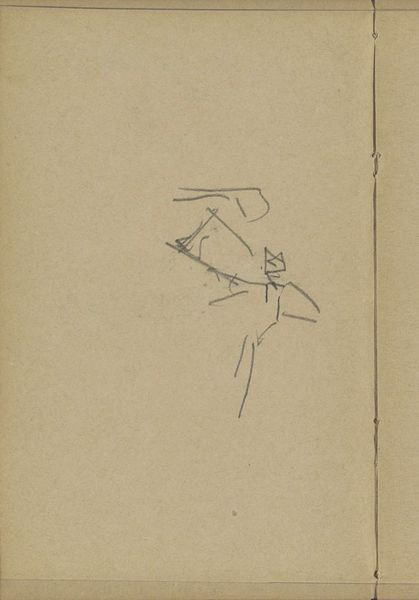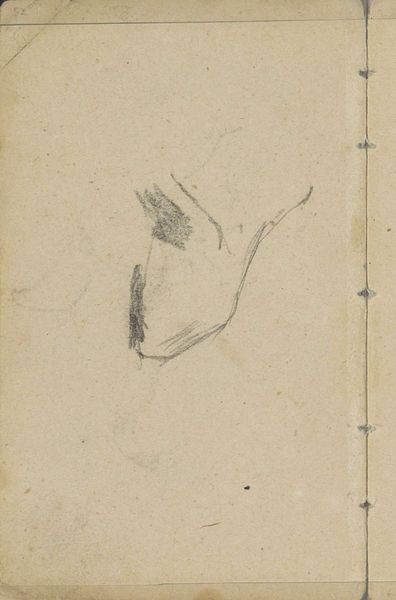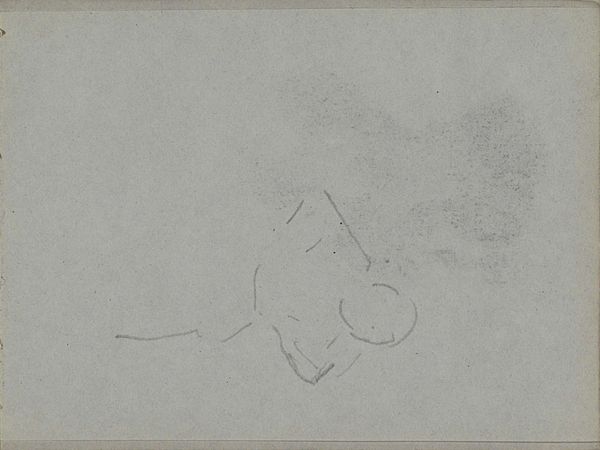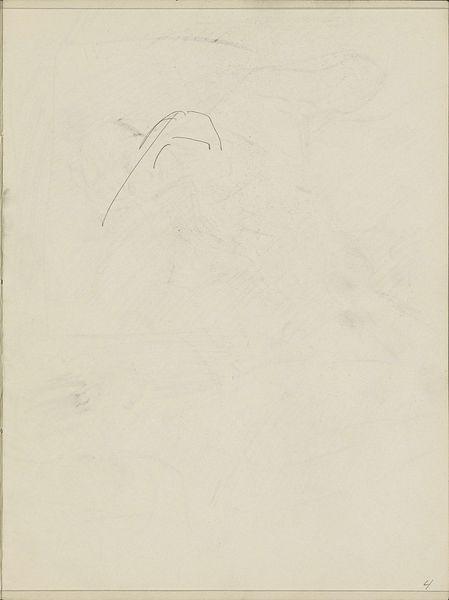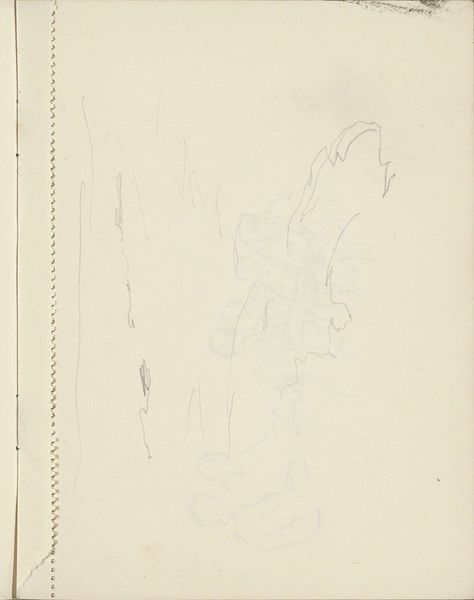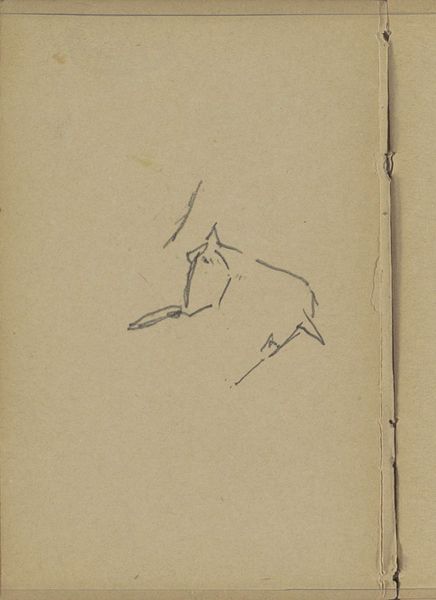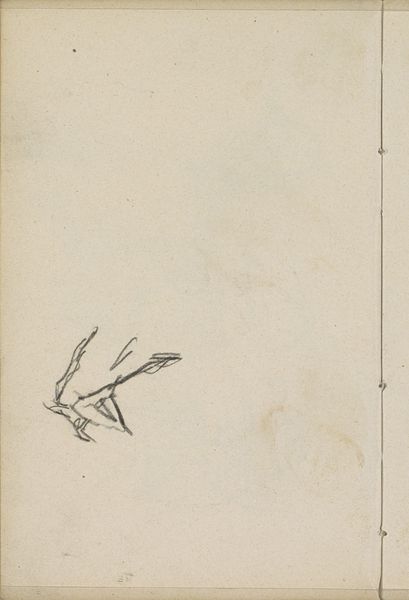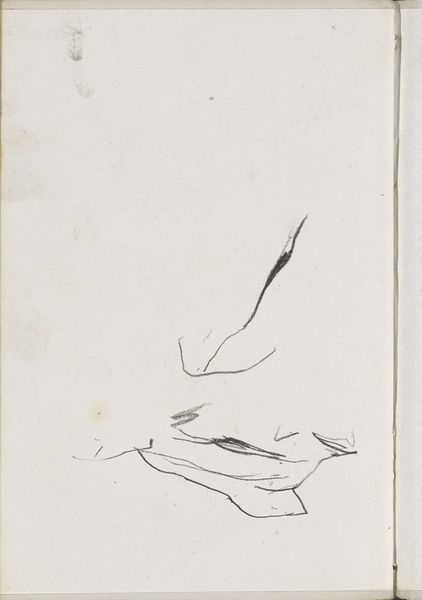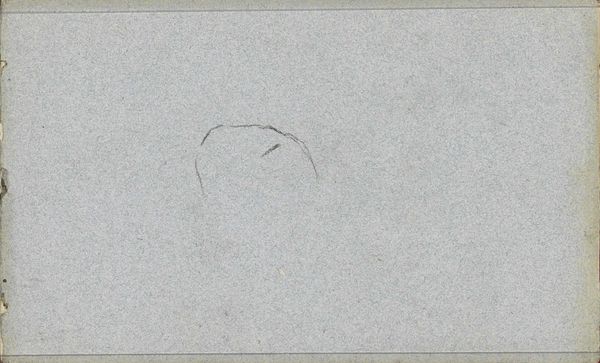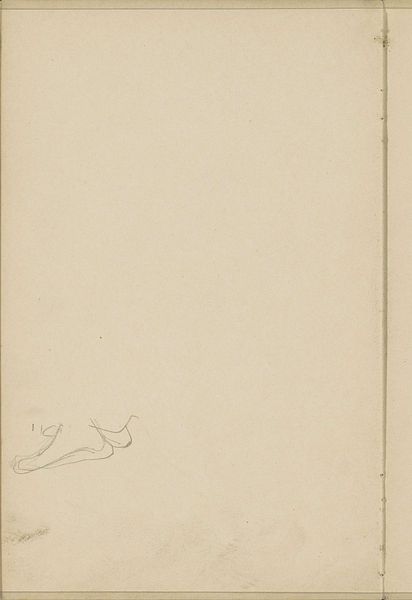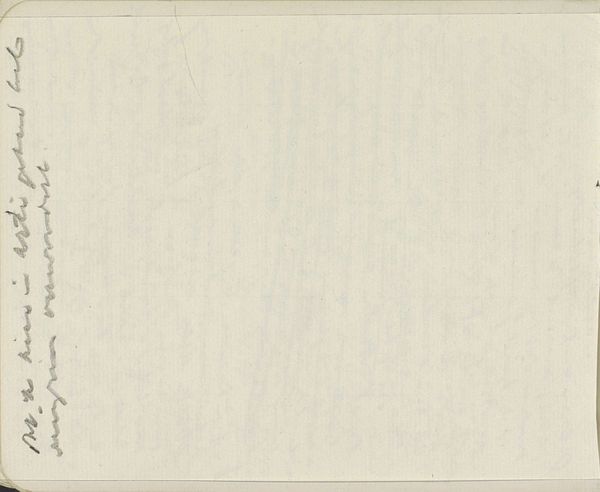
drawing, pencil
#
portrait
#
drawing
#
amateur sketch
#
light pencil work
#
quirky sketch
#
impressionism
#
incomplete sketchy
#
personal sketchbook
#
idea generation sketch
#
sketchwork
#
pencil
#
sketchbook drawing
#
sketchbook art
#
realism
#
initial sketch
Copyright: Rijks Museum: Open Domain
Curator: We're looking at "Studie," a pencil drawing by Johan Hendrik Weissenbruch, likely created between 1834 and 1903. It's currently held in the collection of the Rijksmuseum. Editor: It's incredibly minimal. Almost ghostly. Just the barest suggestion of a human form, fading into the paper itself. I sense a sort of tentative inquiry—more of a thought than a statement. Curator: That resonates with how Weissenbruch utilized sketchbooks. His drawing materials – readily available, inexpensive pencils and paper – speak volumes. This wasn't about producing a finished piece for the market; it's pure process. Weissenbruch explored and recorded his observations without the constraints of formal artistic production. Editor: I’m intrigued by its function as what seems to be idea generation. If we think of the Rijksmuseum as a space of knowledge production, presenting such initial ideas gives insights into artistic practice of that time. It democratizes the art experience. It asks us to engage with the very nuts and bolts of creativity. Curator: Absolutely. Consider the role of institutions like the Rijksmuseum in preserving and showcasing not just polished masterpieces, but also the artistic ephemera, like these preparatory sketches. It's about valuing the labor and the physical acts involved in creating art. How does the act of sketching with a simple pencil transform an everyday observation into something worthy of museum space? Editor: It really challenges the hierarchies embedded within art history. We see Weissenbruch, the artist, raw, not burdened by legacy, by the expectations of critics or the demands of patrons. The loose sketchiness emphasizes a fleeting quality, perhaps meant to capture an atmosphere. Curator: It reminds us of art's function in personal experience. Weissenbruch's use of such immediate materials allowed him to focus on his subjects—on capturing something immediate about human existence. Editor: It’s almost confessional. I can really appreciate seeing an artist’s tentative marks elevated this way. Curator: This gives a look behind the curtain, yes. Seeing that kind of creative workflow humanizes the historical art world. Editor: It’s not often we get this level of intimacy in such a public space. "Studie" allows for that kind of introspection. Curator: A privileged window into art making.
Comments
No comments
Be the first to comment and join the conversation on the ultimate creative platform.
